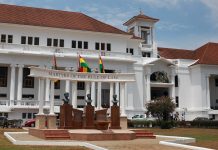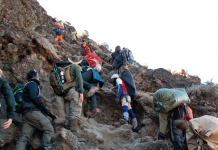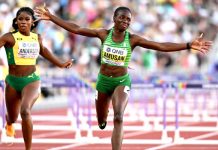Recent macroeconomic and financial developments
After contracting by 3.4% in 2020 due to COVID-19, GDP growth reached 10% in 2021, buoyed by sustained fiscal stimulus, accelerated vaccination rollout (7.9 million people or 61% of the population vaccinated by March 20, 2022), relative easing of COVID-19 restrictions, and recovery in global demand. Growth was driven by expansion in services (12%), industry (13%), and agriculture (6%). GDP per capita recovered from a 5.9% contraction in 2020 to post 7.4% growth in 2021. Inflation declined from 7.7% to 0.8% over the period, owing mainly to low food prices. Monetary policy remained accommodative, and the policy rate was kept at 4.5% from May 2020 (to support economic recovery) until February 2022, when it was raised to 5% (to address expected spikes in inflation). The financial sector remained stable with a capital- adequacy ratio of 26.3% in 2021. The fiscal deficit remained large at 7.1% in 2021 due to spending on COVID-19. It was financed by proceeds from August 2021’s $620 million Eurobond issue and the SDR allocation of $219 million (1.9% of GDP and 12.8% of its international gross reserves). The current account deficit widened from 12.2% of GDP in 2020 to 13.5% of GDP in 2021 due to higher oil prices and increased imports for intermediate and capital goods. The Rwandan franc was relatively stable in 2021, declining by 2.6% against the dollar. The debt-to-GDP ratio climbed from 71.2% in 2020 to 74.6% in 2021. The risk of debt distress remains moderate.
Outlook and risks
GDP growth is projected at 6.9% and7.9% in 2022 and 2023. The accelerated vaccination rollout, pickup in external demand, and government support to small and medium enterprises will help to support continued economic recovery. The current account and fiscal deficits are expected to narrow on the back of increased domestic savings from envisaged fiscal consolidation, reforms in commercial agriculture, and services digitization. Downside risks include the possibility of subdued external demand and fears of repeated waves of COVID-19 variants, which could undermine consumer and investor confidence, as well as the Russia–Ukraine conflict, which might cause supply disruptions: Rwanda relies heavily on Russia for wheat and fertilizer, with 64% of its wheat coming from Russia. The country plans to spend additional $50 million in fiscal stimulus in 2022 while seeking alternative sources of wheat and other disrupted supplies.
Climate change issues and policy options
Rwanda is vulnerable to climate change and is ranked 124 out of 182 countries on the 2020 Country Index of the Notre Dame Global Adaptation Initiative. Due to seasonal temperature shifts, the occurrence of extreme weather events has become more frequent, especially in high altitude areas of the North and Western provinces, and droughts in the low-lying Eastern province, causing serious damage to agriculture, infrastructure, health, and livelihoods. If left unaddressed, the total cost of climate change in Rwanda is estimated at an additional 1% of GDP a year by 2030, rising to 4% by 2050. Rwanda has submitted its updated NDC, which outlines the country’s commitment to developing a climate-resilient, low carbon economy, including a 38% reduction of GHG emissions relative to business as usual by 2030, equivalent to up to 4.6 MtCO2eq, estimated at $11 billion. To ensure that the country remains coordinated in financing these goals, the Rwanda Green Fund was created, and has since raised $217 million for green investments in RE, climate-smart agriculture, and sustainable urbanization. Rwanda is likely to meet SDG 13 by 2030.

























































